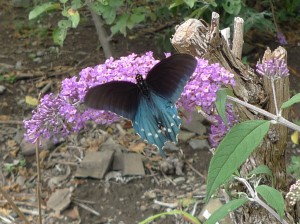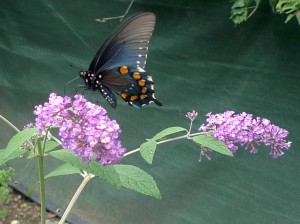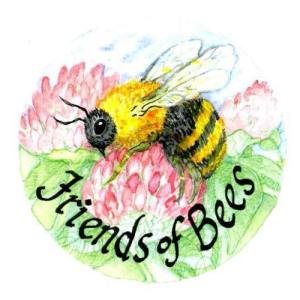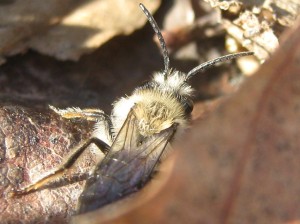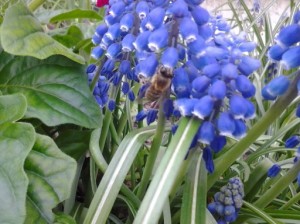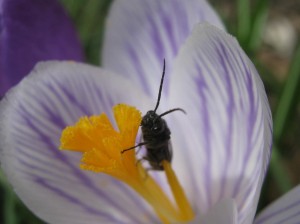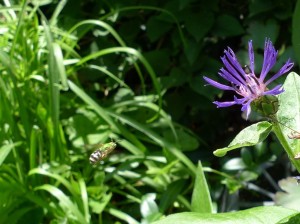
Green Agapostemon bee with stripey tail coming in for a landing on Mountain Bluet
It’s Pollinator Week and everyone wants to know what to do for the bees. The one best thing you can do for bees is to plant flowers. The bees will find even little flowers in a windowbox or a small container. But what kind of flowers?
Ideally for native bees you want to give priority to flowers native in your region. All bees prefer old-fashioned single varieties of flowers. Some modern ornamentals have had the pollen bred out of them. Doubled flowers don’t have any room in the center for bees. Bees generally prefer blue, purple, white, or yellow flowers. Whatever you plant, aim for a variety of flowers so that something is blooming throughout the year. And always looks for plants and seeds that are organic and/or untreated with systemic, persistant pesticides.
This list is by no means complete. Nor do I confine it to native plants. (That’s another issue.)
My Bee All-Stars: These are plants that make me happy watching all the bees. Some are wildflowers you might call “weeds”. This group is roughly in order of flowering.
Crocus, Grape Hyacinth (Muscari), Mountain Bluet (Centaurea), Borage, Raspberries, Nepeta “Walker’s Low”, Salvia, Blanket Flower (Gaillarda) , Butterfly Bush (Buddleia), Oxeye Sunflower (Heliopsis Helianthoides), Anise Hyssop (Agastache), Sunflowers, Purple coneflowers (Echinaecea), Joe Pye weed, New England Aster, Goldenrod, Sedum “Autumn Joy”. For the wildflowers add: Bladder Campion, Daisy Fleabane, St. John’s Wort, Hawkweed, Wild Aster.
And other sources recommend many more flowering plants that can be grown in the Boston area. Continue reading →
